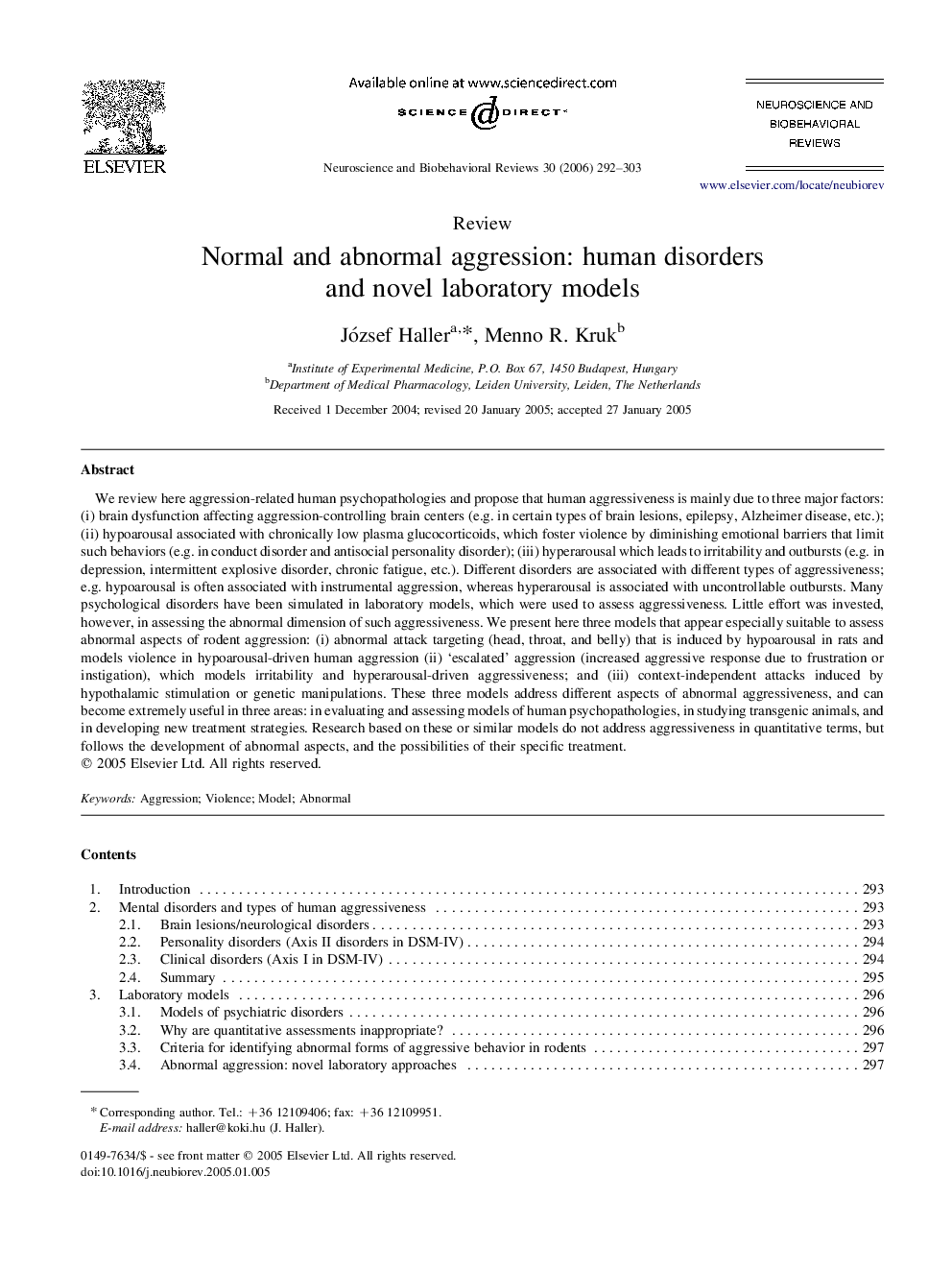| کد مقاله | کد نشریه | سال انتشار | مقاله انگلیسی | نسخه تمام متن |
|---|---|---|---|---|
| 938154 | 924588 | 2006 | 12 صفحه PDF | دانلود رایگان |

We review here aggression-related human psychopathologies and propose that human aggressiveness is mainly due to three major factors: (i) brain dysfunction affecting aggression-controlling brain centers (e.g. in certain types of brain lesions, epilepsy, Alzheimer disease, etc.); (ii) hypoarousal associated with chronically low plasma glucocorticoids, which foster violence by diminishing emotional barriers that limit such behaviors (e.g. in conduct disorder and antisocial personality disorder); (iii) hyperarousal which leads to irritability and outbursts (e.g. in depression, intermittent explosive disorder, chronic fatigue, etc.). Different disorders are associated with different types of aggressiveness; e.g. hypoarousal is often associated with instrumental aggression, whereas hyperarousal is associated with uncontrollable outbursts. Many psychological disorders have been simulated in laboratory models, which were used to assess aggressiveness. Little effort was invested, however, in assessing the abnormal dimension of such aggressiveness. We present here three models that appear especially suitable to assess abnormal aspects of rodent aggression: (i) abnormal attack targeting (head, throat, and belly) that is induced by hypoarousal in rats and models violence in hypoarousal-driven human aggression (ii) ‘escalated’ aggression (increased aggressive response due to frustration or instigation), which models irritability and hyperarousal-driven aggressiveness; and (iii) context-independent attacks induced by hypothalamic stimulation or genetic manipulations. These three models address different aspects of abnormal aggressiveness, and can become extremely useful in three areas: in evaluating and assessing models of human psychopathologies, in studying transgenic animals, and in developing new treatment strategies. Research based on these or similar models do not address aggressiveness in quantitative terms, but follows the development of abnormal aspects, and the possibilities of their specific treatment.
Journal: Neuroscience & Biobehavioral Reviews - Volume 30, Issue 3, 2006, Pages 292–303